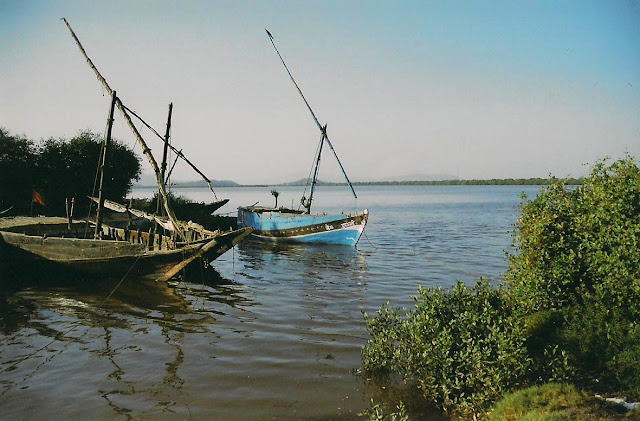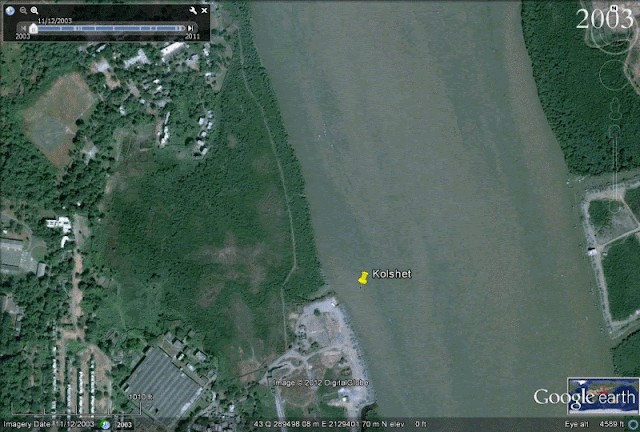Place I Left Behind
Every day is Earth Day for me, and I’m sure it is for you too. But there are some who do not recognize the significance of merely being on this planet. And it is for that reason 22nd of every April is celebrated as Earth Day.
I hope we remember this day to-morrow and forever after, for today many of us will rough it out in the field, plant trees, teach kids, and learn from others. Many of us will also wonder what impact one day can make. They will want numbers – statistics and facts; in the end they ask if it is worth it. But sometimes, things get measured, as it did on Earth Hour, as these statistics show. On Earth Day, things are not difficult to measure, but they’re hardly ever measured on a global level.
Public awareness – how many citizens participated, and how many were inspired; tree plantation – how many trees were planted, and how many survived; clean-up drives – how much area was covered, and how much more is remaining; and so forth, all can be measured in some way. What we lack today, at global level – is a platform to showcase the undertakings. Sure, some of us do update websites and newspapers, but this scattered data is of very less significance to understand the global impacts. But of course, bottom line is that there are significant impacts through activities being undertaken today across the globe. That, cheers me up.
But on this day, I’m taking you to a land that of old was one of my most beloved places – a place I left behind as I grew up. And today, I lament for it.
It lies in the corner of the city.
On a road that winds through a series of chemical industries, there is a village called Kolshet that lies at its end, a booming town with an influx of population – developing and merging rapidly with the city. The road that leaves this village is graveled and narrow. It comes around a bend, turning right from a crematorium, where, for some reason, dead silence always prevails. The track runs round another curve through paddy fields, and opens into an expanse of a flattened land, facing the large estuary of Ulhas River, the Thane Creek. The shore is flanked by dense mangroves, extending inwards for several acres, until they abruptly meet the end of the line where urbanization advances. Every thirty minutes, a truck trudges out and another roars in, as the noisy diesel-run boats hum over the silent waters, a black smoke rising from their makeshift chimneys, dredging the creek, and dredging a little more for reti (black sand), until they sink to the gunwale.
 |
| Kolshet, 2004 |
The water, however, is teeming with life. Many marine fishes find a sanctuary in the estuary – Puffer fish fingerlings, Scat fish, Target Perch, Needle-fish, Cat-fishes of varying sizes, and even fishes of the freshwaters – the Snakeheads, swim around it’s edges. The shoreline is full of Ghost Crab colonies; Fiddler Crabs (Uca sp.) and Metopograpsus thrive in this ecosystem. The Koli community (fishermen of the Sahyadri), take their turns sand-dredging and fishing. And they always came up with a great catch.
All this was 15 years ago. Today, the reti industry is booming for the sand is demanded by the construction industry. And as urbanization expands, there is a greater need for housing, hence the sand. The little patch barely measuring one tenth of an acre, has expanded to more than half a kilometer – in a matter three years.
What I discovered startled me. The land I spent my childhood fishing and catching crabs, where I trotted on the little tracks amidst the mangroves, crossed bridges of bamboo and broken wooden scraps, and ships in ruins that reminded me of an ancient land forgotten in time, all wiped out.
It has been more than half-a-decade since I visited Kolshet, but technology is always handy. Recently, I ran the Historical Imagery tool, courtesy of Google Earth, and witnessed the brutality by my own eyes. Google Earth is like the Third Eye – you cannot look into the future, but you can ascertain it from the events in the past.
 |
| Kolshet, 2003 to 2012. Courtesy of Google Earth, (copyright of Google) |
There are no Metopograpsis’ or Uca’s anymore. They ran away, probably died off. No Scat fishes come to the shores to lay their eggs, they have abandoned this shore. Puffer fishes, those little balls of gold studded with little spikes, are floating bottom-side up on the surface. The colonies of Ghost Crabs, who with their bright white chelicerae showed off their powers, are wiped out.
A few trails that I trotted were slowly expanded, and branched out. The wooden bridges were burned, and the river channels filled with debris. And slowly the mangroves were hacked and starved of their nourishment.
We all know the reasons well enough. The scenario is similar to what is happening worldwide – be it for housing or agriculture – the most basic of our needs. It is the increasing population that puts the pressure on the natural resources. In the process, many die and many still become extinct.
Kolshet’s ecology is dead, but not its economy. I may sit here and regret the place I left behind, but it is rising as one of the most sought-after residential areas, for at the bottom lies a fact: India’s population needs a home. Kolshet is, inevitably, providing resources to one species at the expense of the other. Unfortunately, this is startlingly familiar to the nature’s way. Multiply, vary, let the strongest live and the weakest die.
I wish you a happy Earth Day.
More reading:
Going back to visit places can be distressing.
ReplyDeleteVery well written!
ReplyDelete